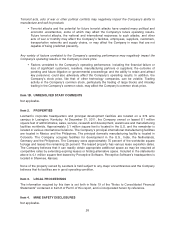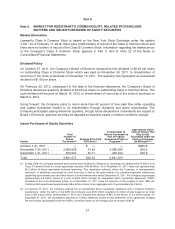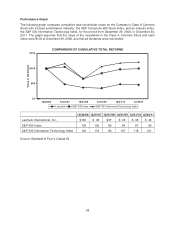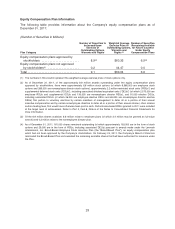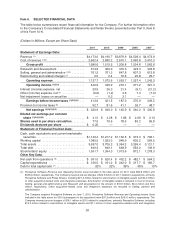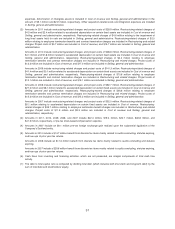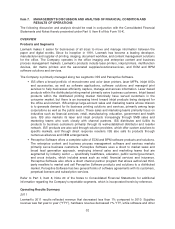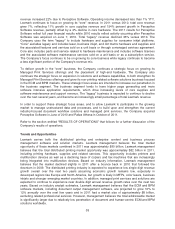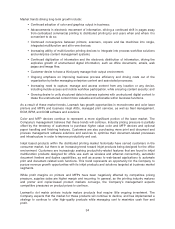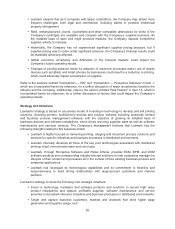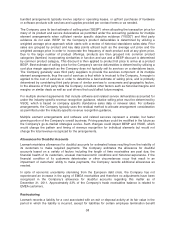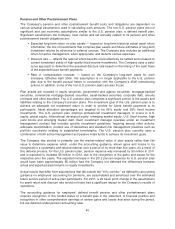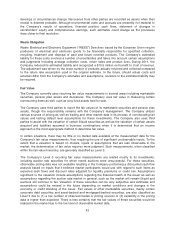Lexmark 2011 Annual Report Download - page 38
Download and view the complete annual report
Please find page 38 of the 2011 Lexmark annual report below. You can navigate through the pages in the report by either clicking on the pages listed below, or by using the keyword search tool below to find specific information within the annual report.Market trends driving long-term growth include:
• Continued adoption of color and graphics output in business;
• Advancements in electronic movement of information, driving a continued shift in pages away
from centralized commercial printing to distributed printing by end users when and where it is
convenient to do so;
• Continued convergence between printers, scanners, copiers and fax machines into single,
integrated multifunction and all-in-one devices;
• Increasing ability of multi-function printing devices to integrate into process workflow solutions
and enterprise content management systems;
• Continued digitization of information and the electronic distribution of information, driving the
explosive growth of unstructured digital information, such as office documents, emails, web
pages and image files;
• Customer desire to have a third party manage their output environment;
• Ongoing emphasis on improving business process efficiency and driving costs out of the
organization by better managing enterprise content and associated processes;
• Increasing need to capture, manage and access content from any location or any device,
including mobile access and mobile workflow participation, while ensuring content security; and
• Growing desire to unify structured data in business systems with unstructured digital content to
make the unstructured content more valuable and actionable within business functions.
As a result of these market trends, Lexmark has growth opportunities in monochrome and color laser
printers and MFPs and business inkjet AIOs, managed print services, as well as fleet management,
ECM, BPM, and DOM software and solutions.
Color and MFP devices continue to represent a more significant portion of the laser market. The
Company’s management believes that these trends will continue. Industry pricing pressure is partially
offset by the tendency of customers to purchase higher value color and MFP devices and optional
paper handling and finishing features. Customers are also purchasing more print and document and
process management software solutions and services to optimize their document-related processes
and infrastructure in order to improve productivity and cost.
Inkjet based products within the distributed printing market historically have served customers in the
consumer market, but there is an increasing trend toward inkjet products being designed for the office
environment. Customers are increasingly seeking productivity-related features that are found in inkjet
multifunction products designed for office use such as wireless and ethernet connectivity, automatic
document feeders and duplex capabilities, as well as access to web-based applications to automate
print and document related work functions. This trend represents an opportunity for the Company to
pursue revenue growth opportunities with its inkjet products and solutions targeted at business market
segments.
While profit margins on printers and MFPs have been negatively affected by competitive pricing
pressure, supplies sales are higher margin and recurring. In general, as the printing industry matures
and printer and copier-based product markets converge, the Company’s management expects
competitive pressures on product prices to continue.
Lexmark’s dot matrix printers include mature products that require little ongoing investment. The
Company expects that the market for these products will continue to decline, and has implemented a
strategy to continue to offer high-quality products while managing cost to maximize cash flow and
profit.
34




